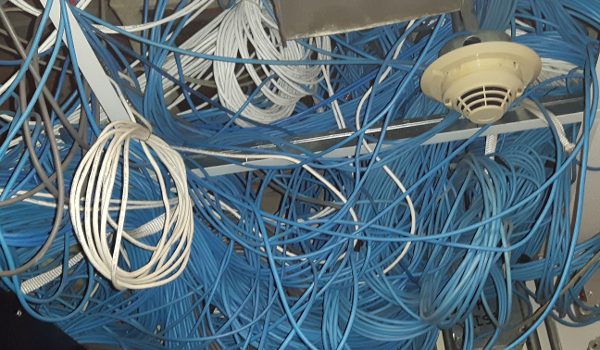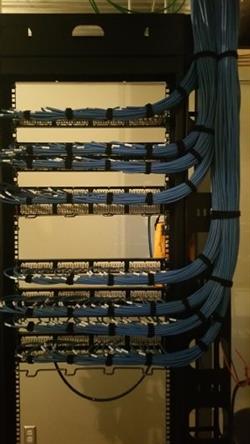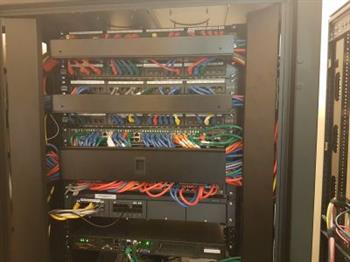
What is the benefit of a good looking, well designed and manageable cabling room/LAN room or network infrastructure? Sure it looks nice but network traffic does not care…or does it?. Why not shove all your equipment on a shelf in the IT person’s office or under her desk? Why not have switches all over the building if you have run out of cable drops in an office and need another device connected? Why not just use WiFi?
“Non-structured cabling may seem quicker and easier but will cause you more work and trouble over years of use.”
I will answer hopefully these questions to your satisfaction in the next few paragraphs.
First of all we need to be on the same page and so will define structured cabling:
“Structured Cabling is defined as building or campus telecommunications cabling infrastructure that consists of a number of standardized smaller elements (structured). A properly designed and installed structured cabling system provides a cabling infrastructure that delivers predictable performance as well as has the flexibility to accommodate moves, adds and changes; maximizes system availability, provides redundancy; and future proofs the usability of the cabling system.”
(http://www.cablexpress.com/resources/glossary-cable-terms/#panel45)


With the definition in mind what would be some of the benefits? Firstly, the potential for human error is drastically reduced because the cables are labelled and predictably located. IT techs are not guessing where cables are plugged in to and connected to which device. Cable and port tracing becomes much easier and saves time and the cabling looks aesthetically pleasing and not a jumbled mess. Like these:

“Downtime is the biggest risk of not switching to a Structured Cabling System.”
With an unorganised messy cabling infrastructure, mistakes are commonly made. Incorrect ports are unplugged. Even worse is the messy cabling that gets in the way. Trying to remove a single cable from a large tangled mess can cause stress on the other cables. This stress can lead to network errors in the hardware that are very difficult to trace.
There are many cabling rooms that may have many good things going for them:
- labelled jacks and cables
- multiple IT/cable rooms with well designed backbone to the core (for large buildings)
- all cables are home run
- cable management to organise patch cables
- clean and free from junk on the floor
- colour coding for patch cables and jacks
With a well designed LAN/cabling room with the features above you can easily add or remove devices to a switch and troubleshoot network issues. Business owners, management and customers will view IT as a classy, well organised and professional group rather than messy, unprofessional geeks. It is not much more work to do the job right!
So what about WiFi? Even WiFi requires cabling access points (AP) and many devices work much better when wired. WiFi is susceptible to interference from other access points or devices in an office such as microwave ovens, some cordless phones, other clients connecting to the AP and some older Bluetooth devices to name a few. WiFi APs also have limitations on the maximum number of active clients (usually around 25-30) but will depend on too many variables to discuss here. Even more, some devices should not be on wireless networks.
Would you put your servers, your Avaya IP Office phone system or desk phones on WiFi?
WiFi is great for browsing the Interwebs or email but should not be used for mission critical devices.
Teleco can help you with your current cabling infrastructure and move it towards a structured solution or start from scratch and install all new cabling. Call us at 807‑346‑7292 or email at landlinesales@teleco.ca

 “Downtime is the biggest risk of not switching to a Structured Cabling System.”
“Downtime is the biggest risk of not switching to a Structured Cabling System.”